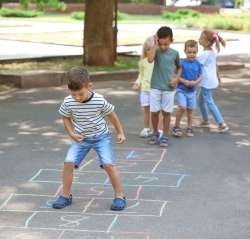The Importance of Learning Cardinal Numbers
Understanding numbers is a crucial part of early childhood education. It’s a foundational skill that will help your preschooler understand cardinal numbers and much more as they grow. Numbers are everywhere, right? They’re in the recipes we cook, the time we check, and even on the TV remote when we switch channels.
When your child learns about cardinal numbers, it’s not just about saying “1, 2, 3.” It’s about grasping the concept of quantity—knowing that “three” cookies mean you get to eat more than just “one.” Later on, this basic understanding of numbers opens doors to adding and subtracting, understanding money, and even telling time.
Another great reason to start early is social skills. Picture this: Your child is at a playdate. There are only four toys, but five kids. If your child knows about numbers, they’ll get that one kid might be left out and might even suggest sharing or taking turns. In short, understanding cardinal numbers helps your child become not just good at counting, but also kind and considerate.
So yes, teaching numbers is important. It’s not just about counting; it’s about laying the groundwork for a lifetime of learning and thoughtful interactions.
Difference Between Cardinal and Ordinal Numbers
You’ve probably heard about cardinal and ordinal numbers, but you might not know what they really mean. In simple terms, cardinal numbers like 1, 2, 3 are all about quantity. They tell us how many apples are in a basket or how many blocks your child has stacked up. On the other hand, ordinal numbers like 1st, 2nd, 3rd are about position or rank. They tell us who came first in a race or what floor you live on.
So why does this matter for your little one? Knowing the difference helps kids grasp the world around them. Let’s take birthdays as an example. Your child turns 4. That ‘4’ is a cardinal number; it tells us how many years old they are. Now, imagine it’s their turn to blow out the candles. They’re the first one to go—that’s where ‘1st’ comes into play, an ordinal number indicating their position in line.
To sum up, cardinal numbers help kids understand ‘how many,’ while ordinal numbers help them understand ‘in what order.’ Each serves a different purpose, but both are essential building blocks in understanding numbers and how they function in our daily lives.
Effective Techniques to Help Your Preschooler Understand Cardinal Numbers
Counting Objects in Real Life

One of the best ways to help your preschooler understand cardinal numbers is through real-life counting. And the beauty of it is, you don’t need any fancy tools or apps; your home is full of counting opportunities.
For instance, next time you’re folding laundry, you can ask your child to count how many socks there are. If you’re in the kitchen, let your child count the spoons or the number of apple slices they want for a snack. The goal is to make learning numbers a natural part of everyday life. Trust me, it sticks better that way.
Here’s another idea: grocery shopping. Your kid can help you count the oranges as you put them in the bag or the number of cereal boxes you’re buying. It turns a chore into an educational outing, and it makes your little one feel involved and important.
So, the next time you’re doing something around the house, pause and think about how you can turn it into a counting lesson. These small but meaningful interactions will help your preschooler understand cardinal numbers in a way that feels natural and engaging.
Using Fingers to Count: A Natural Way to Help Your Preschooler Understand Cardinal Numbers
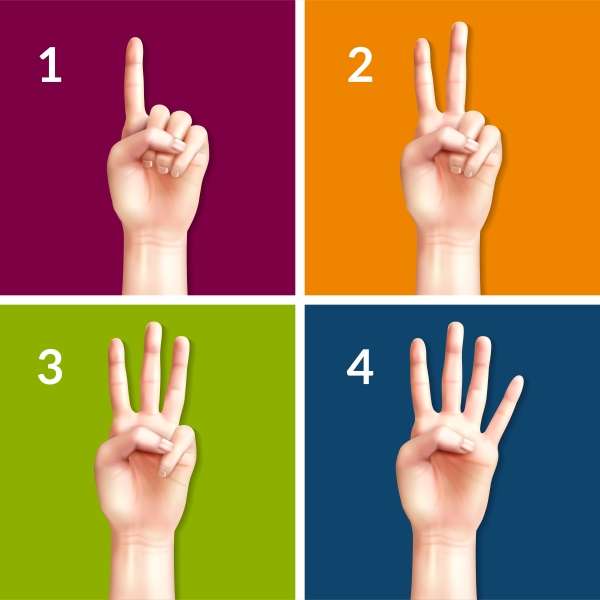
Okay, let’s talk about something we all have at our fingertips—literally! Fingers are like built-in counting tools that are always with us. So why not make the most of them? Teaching your child to count using their fingers is not only practical; it’s also a fun and interactive way to get those numbers to stick in their memory.
Start off with simple numbers like one through five. You can say, “Let’s count to five with our fingers!” Lift one finger at a time as you count, encouraging your child to do the same. This helps them see the numbers and feel them, making the learning experience multi-sensory.
As they get the hang of it, you can go higher. Challenge them to count up to 10 using both hands. Before you know it, they’ll be showing off their counting skills to everyone they meet.
But don’t stop there. You can incorporate finger-counting into other activities, too. When you’re reading a book together, use your fingers to count the number of dogs on a page or the number of stars in the sky. Finger-counting is a natural and effective way to make numbers a part of everyday life.
Storytelling and Cardinal Numbers
Everyone loves a good tale, right? Stories captivate children’s imagination, and guess what? You can sneak in some counting while you’re at it.
Imagine you’re reading a bedtime story. Why not make the story about “Five little monkeys jumping on the bed,” but with a twist? As each monkey falls off, ask your child, “How many are left?” This gets them thinking about numbers in a fun, relaxed setting.
Or, you can create your own stories. How about a tale of “Three little ducks who went out to play?” When one goes home, ask, “How many ducks are left?” Your child will likely be eager to find out what happens next and will engage with the numbers without even realizing they’re learning. It’s like hiding veggies in a smoothie—good stuff disguised as fun.
You could even make it interactive. Ask your child to come up with the next part of the story, incorporating numbers as you go along. Like, “Two rabbits joined the ducks. How many animals are playing now?” This encourages them to think creatively and mathematically at the same time.
Number Songs and Rhymes
Music has a way of sticking in our heads, and guess what? It can do the same for numbers. Songs and rhymes make learning not just engaging but also super memorable for little ones.
Take classics like “Five Little Ducks” or “Ten Green Bottles.” You’ve probably heard these before, and there’s a good reason they’re classics. As you sing along, your child is counting without even realizing it. One duck goes, then another, and voila, your child is doing subtraction!
The best part? These songs are easy to sing during car rides, while taking a bath, or even while doing chores. They turn mundane moments into learning opportunities. You can even take it a step further. Make up your own number songs about things your child loves. Do they like cars? How about a song counting different colored cars on the road? Love animals? Count different animals at the zoo in your own custom tune.
In short, number songs are like a two-for-one deal. They offer entertainment and education, making them a fantastic tool in your kit to help your preschooler understand cardinal numbers.
Coloring Activities to Help Your Preschooler Understand Cardinal Numbers
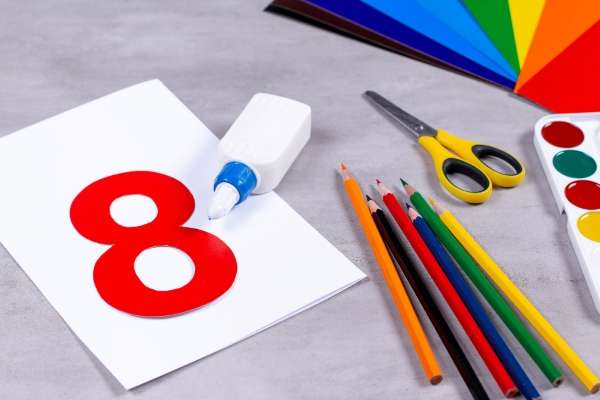
Now, let’s add some color to this number game! Coloring sheets can be more than just a way to keep your child occupied; they can actually be a stealthy learning tool. Imagine a coloring sheet with numbers in different sections. As your child fills in each part with their favorite colors, they can say the number out loud.
This works for a couple of reasons. First, kids love to color; it’s fun and it lets them be creative. Second, saying the numbers out loud as they color reinforces the learning. They’re seeing the number, saying it, and coloring it—all at the same time. That’s multi-sensory learning right there!
And don’t just stick to basic sheets. You can find or create coloring pages that feature numbers within a scene—like animals with numbers on them, or a garden where each flower corresponds to a different number. This way, you’re tying numbers to objects, making them more relatable for your child.
So, next time you’re looking for an activity that’s both fun and educational, consider grabbing some number-themed coloring sheets.
Using Number Flashcards: A Quick and Effective Way to Help Your Preschooler Understand Cardinal Numbers
Let’s talk flashcards. Now, I know what you’re thinking—flashcards sound a bit like schoolwork. But hear me out. Flashcards can actually be a fun and quick way to make numbers stick. Plus, they’re super easy to use. All you have to do is show the card, say the number, and ask your kiddo to repeat it. Simple, right?
The thing is, repetition is key for memory, especially for little ones. And flashcards are a perfect way to help your preschooler understand cardinal numbers. They offer quick, repetitive learning that can be squeezed into any part of the day. Waiting for dinner to cook? Flashcards. Five minutes before bedtime? Flashcards again.
You can even make it a game. Place the cards face down and ask your child to pick one. If they say the number correctly, they keep the card. If not, it goes back in the pile. The one with the most cards at the end wins!
But don’t just stick to plain old number cards. Look for sets that also include pictures—like three apples for the number 3 or five stars for the number 5. This helps your child associate numbers with real-world objects.
Number Matching Games
Who says learning has to be dull? Number-matching games are a fantastic way to engage your child in learning numbers, and they won’t even realize they’re doing it. You can start with cards that have numbers on one side and pictures of objects on the other. Spread them out on the floor, face up.
Now, here’s where you can help your preschooler understand cardinal numbers. Call out a scenario like, “Find the card with four apples,” and watch them search and pick the correct card. This kind of active participation makes the number ‘four’ more than just a symbol; it turns it into four actual things, making the concept much more concrete.
Keep it interesting by switching roles. Let your child be the one to call out the scenario while you find the card. This keeps the game engaging and gives them a sense of accomplishment like they’re the teacher now.
And the beauty of this game? You can make it as simple or as challenging as you want. Start with numbers 1 to 5, then gradually move up as your child becomes more comfortable.
Cooking and Baking Together

Let’s talk about something we all love—food! Believe it or not, the kitchen is a fantastic classroom for teaching numbers. Cooking and baking are not just about making something yummy; they’re also about measuring and counting. It’s like hitting two birds with one stone—delicious and educational!
Start simple. Next time you’re baking cookies or making pancakes, let your little chef be in charge of the flour. Say, “We need two cups of flour,” and guide them as they fill up the measuring cup. This gives them hands-on experience with numbers and a real-world understanding of what ‘two cups’ actually look like.
Don’t stop there. If the recipe calls for three teaspoons of sugar, ask them to count out loud as they measure it into the bowl. Or if you’re chopping veggies for dinner, you could say, “Let’s cut these carrots into ten pieces,” and count together as you go.
The best part is the reward at the end—a tasty treat they helped create. It’s a lesson they’ll love to eat, and you get some help in the kitchen. Now that’s what I call a win-win!
Visual Aids Will Help Your Preschooler Understand Cardinal Numbers
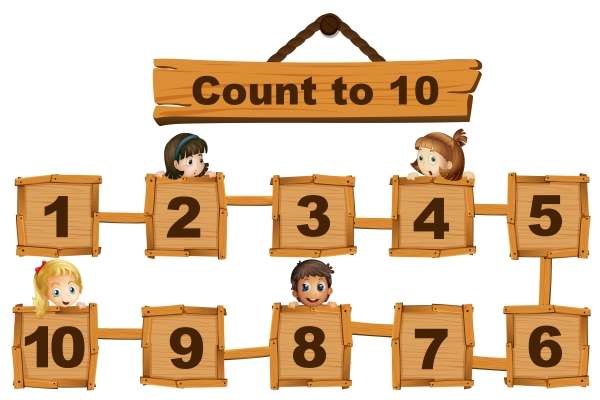
Let’s move from the kitchen to the bedroom or play area. Visual aids, like posters and charts, are a great addition to any learning environment. Think about it. Your child spends a lot of time in these spaces. Why not make them educational as well as fun?
Start by hanging up a poster with numbers and perhaps some pictures that correlate. It could be a chart with animals next to each number—like one elephant, two giraffes, and so on. Hang it at your child’s eye level so it’s easy for them to see and interact with.
Every so often, make it a point to refer to this chart. Maybe during playtime, you could casually point to the number three and say, “Look, three bunnies! Can you hop like a bunny three times?” It becomes a quick, spontaneous lesson that makes numbers real for them.
You can even make this a daily ritual. For instance, while getting dressed in the morning or winding down for bedtime, spend a minute or two talking about a number on the poster. This consistent exposure helps engrain these numbers in their minds.
Number Puzzles: A Jigsaw of Learning
Let’s shift gears a bit and talk puzzles. You know, those pieces of cardboard that can keep your child—and let’s be honest, sometimes you too—engaged for hours? Well, puzzles are more than just a way to kill time; they can be a fantastic learning tool as well.
Here’s a way to help your preschooler understand cardinal numbers. Pick up a number puzzle that involves placing numbers in the correct sequence. This could be as straightforward as a 1-10 puzzle where each piece corresponds to a number. Once the puzzle is scattered, your child’s task is to put the numbers in the right order. The challenge of figuring out where each piece goes helps cement the concept of what ‘one’, ‘two’, ‘three’, and so on, really mean.
But let’s make it even more engaging. Once they complete the puzzle, celebrate by counting together from one to the highest number in the puzzle. Adding this quick recap reinforces what they’ve just learned and makes them feel like a little champion.
Trust me, puzzles can offer more than just entertainment. They can be a low-pressure, enjoyable way for your child to get comfortable with numbers.
Play Store or Market
Who’s up for a shopping spree? But wait, this isn’t just any shopping trip; it’s a trip to your very own Play Store or market! Setting up a pretend store at home can make learning about numbers feel like a grand adventure. And guess what? It’s super easy to do.
Grab some toys, stuffed animals, or even real fruits and veggies, and line them up like they’re on store shelves. Put little price tags on them; maybe the teddy bear costs ‘three coins’ and the toy car is ‘five coins.’ You can use play money or even buttons as your currency.
Now invite your child to shop. They can pick what they want to buy, add up the cost, and even hand over the pretend money to pay for it. Ask questions like, “How much does it cost for both the apple and the banana?” or “If you give me five coins, and your toy costs two coins, how many will you get back?”
Through this imaginative play, your child gets to practice counting and basic addition and subtraction, all while having a blast.
Outdoor Activities Help Your Preschooler Understand Cardinal Numbers
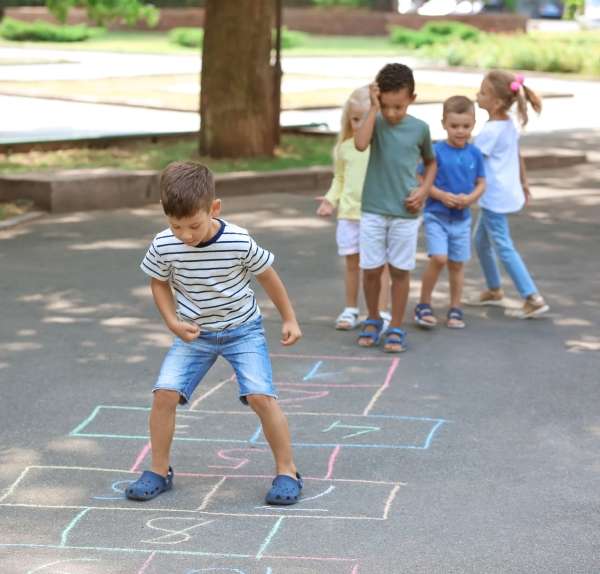
Let’s step outside for a moment, shall we? The great outdoors isn’t just for running and playing catch; it can also be a wonderful classroom. You might be surprised at how much your kiddo can learn while getting some fresh air and sunshine.
Hopscotch is a classic that can help your preschooler understand cardinal numbers in a jiffy. Draw a hopscotch grid with chalk and number the squares. Start simple, maybe just up to 5 or 10. Encourage your child to hop from one square to another, saying each number as they land on it. It’s like a two-for-one deal; they get to exercise and learn at the same time!
Here’s another tip: Try modifying the game. Instead of just hopping forward, throw a stone onto a number and ask them to skip that square. Then ask, “What number did you skip?” It adds a little spice to the game and reinforces number recognition and counting.
So, don’t underestimate the learning power of a sunny day and a piece of chalk. It turns out, that understanding numbers can be as easy as a hop, skip, and jump!
FAQ: How can I Assess My Child’s Understanding of Numbers?
Knowing whether your child is picking up on these number concepts can give you peace of mind and help you decide the next steps in their learning journey.
A straightforward way to assess this is through small, everyday tasks. Let’s say you’re playing with blocks. You can ask, “Can you give me five blocks?” If your child can correctly pick up five blocks and hand them to you, that’s a good sign they understand what “five” represents. You can then up the ante by asking for different quantities or asking them to add or remove a block to a pile to make a certain number.
Another good method is observation. Watch them during playtime. Are they separating their toys into groups? Are they distributing snacks equally among their stuffed animals? These are little cues that they’re starting to get it.
Wrapping Up: Final Thoughts and Tips
We’ve covered a lot of ground, haven’t we? The main takeaway here is simple: learning numbers doesn’t have to be a chore. Actually, it can be a lot of fun!
You really don’t need to be a math whiz or have a teaching degree to guide your little one through the world of numbers. It’s more about turning ordinary moments into extraordinary learning opportunities. Be it a walk in the park, a trip to the grocery store, or just coloring at home, each can be a stage for learning.
Most importantly, make it enjoyable. When kids have fun, they absorb information like a sponge. Keep that in mind, and you’ll find endless ways to sprinkle some learning into your everyday routine.
So go on, add a dash of numbers to your playtime, your errands, and even your quiet moments. Your child will thank you for it one day, probably when they’re acing their math tests! Until then, keep it lighthearted, keep it engaging, and keep on counting.





